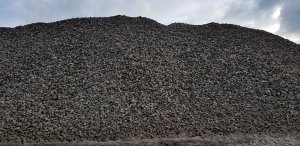Aggregates And Their Uses

What Are Aggregates?
Here at Armstrongs, we have been a reliable supplier of aggregate for years. Now we think it’s time we taught you a little more about what we do, how we do it and why. So what are aggregates and their uses? First of all, you are probably wondering what is aggregate, well this is the material which is made up of a load of fragments which are loosely packed together and used all over the world for different purposes.
The Extraction Process
To acquire the perfect aggregate for the job, there are certain steps which must be followed for extraction. The first step in the process is identifying the perfect place to blast for the required stone. Once the right place has been found, holes must be drilled for the explosives.
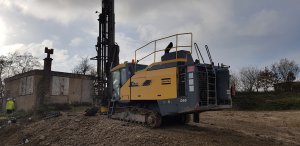
These explosives will allow us to release the stone we need for making the aggregate. Now it’s time for the blast, the almighty explosion that sends a bellowing rumble through the quarry. Last week at Montcliffe, we performed a blast that yielded 15,000 tonnes of stone; this roughly lasts around two weeks.
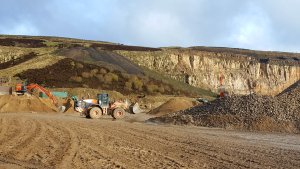
Next, we will collect these large pieces of stone and bash them down using an excavator with a pecker tip. Doing this will allow us to then put the smaller broken down pieces of stone into the crusher machine. The crusher does exactly what it says on the tin, and crushes! This large aggregate is crushed down to various sizes which then need sorting into categories. Once through the crusher, the remains are spilled out into a pile, waiting to be transported to the Screening machine. Using an excavator and a truck, the pile of smaller aggregate is then transported to the screener, which will wash and sort the piles.
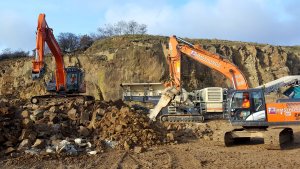
The Screening And Washing Process
These new piles will consist of various sized aggregate which will later be used for different functions. Armstrongs produce a range of aggregate sizes from 2mm and 10mm all the way to 75mm and the gabion sized aggregate 150mm. The use of the aggregates will depend on the size of the aggregate and this is why it is important to screen the aggregate.
The machine which this takes place in, is a large vibrating screen box which consists of a number of various sized screens and meshes. This will separate the different sized aggregate like a sieve until they are all separated and washed. These sieves will separate the different sizes of aggregates and create different piles which will vary in sizes, ranging from larger 20mm to as fine as 2mm sand. During this screening process, the aggregate is washed and this is to remove any unwanted materials such as clay, silt and dirt which may be present. We do this simply so that there is no drying effect or impurities in the future. This could lead to cracking, and you do not want that!
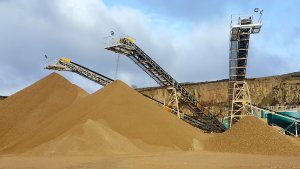
Armstrongs operate from 5 quarries across the North West and Cumbria which means we can keep tight control on quality of our products.
Why Are Aggregates Important?
We produce aggregate as there is an ever growing need for it in the world we live in today. With the constant construction of houses and other buildings throughout the world, it’s important to keep producing aggregate. It is a vital part of some construction jobs.
Aggregates And Their Uses
One of the most common uses of aggregates is concrete, another material which Armstrongs Group produce. Concrete is used widely throughout the construction business. From foundations to full fledged buildings. Ready mix concrete is a large part of the construction industry and is what our subsidiary AMIX does best.
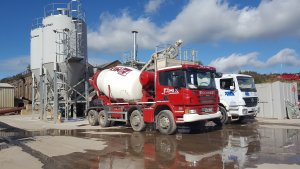
Coastal Management And Other Functions
Another example of aggregates and their uses are gabion baskets, which is large aggregate inside a metal mesh basket. This is a more aesthetic use of aggregate and is for more of the larger variations of aggregate. Armstrongs use a 150mm sized aggregate for gabion baskets. Gabions are used in garden purposes and also civil engineering projects as well. These gabion baskets create a sturdy structure which is perfect for coastal management.
Have you ever noticed the stone which is laid between and around the tracks which trains run on? This is aggregate and it has many functions for being on train tracks. Possibly the most important function of the large and rough aggregate is to hold down the cross tie pieces of wood between the tracks, so that they do not separate. Another function of the aggregate ballast is to absorb the vibrations from the trains themselves.
MOT type 1 aggregate is a sub base that is formed using recycle crushed down concrete and various sized rubble. The rubble can consist of sizes from 40mm aggregate to dust . MOT type 1 has been considered an ideal sub base for both projects large or small for a long time. Pavements are a good example of what this type of aggregate can be used for.
This is why aggregates and their uses are vital to the construction industry.
This is the process which we here at Armstrongs go through to make sure the you have the product you want. If you want to find out about our aggregate products which we offer and the scale which sell on, you can click HERE.
You can find more updates from us across our website and on our social media channels such as Facebook, Instagram and Twitter!

